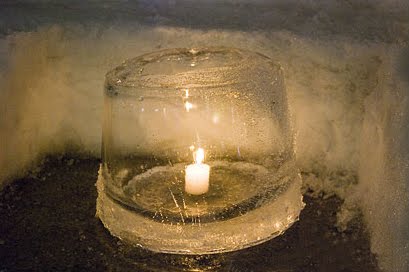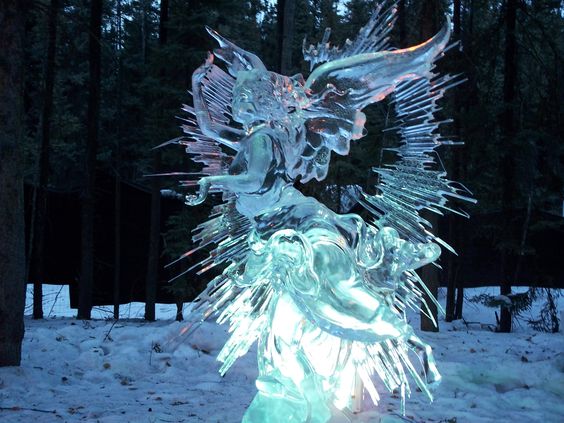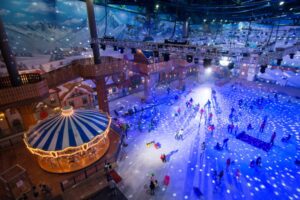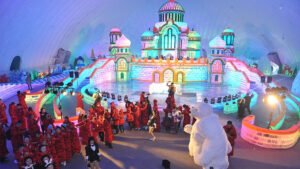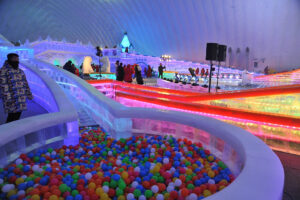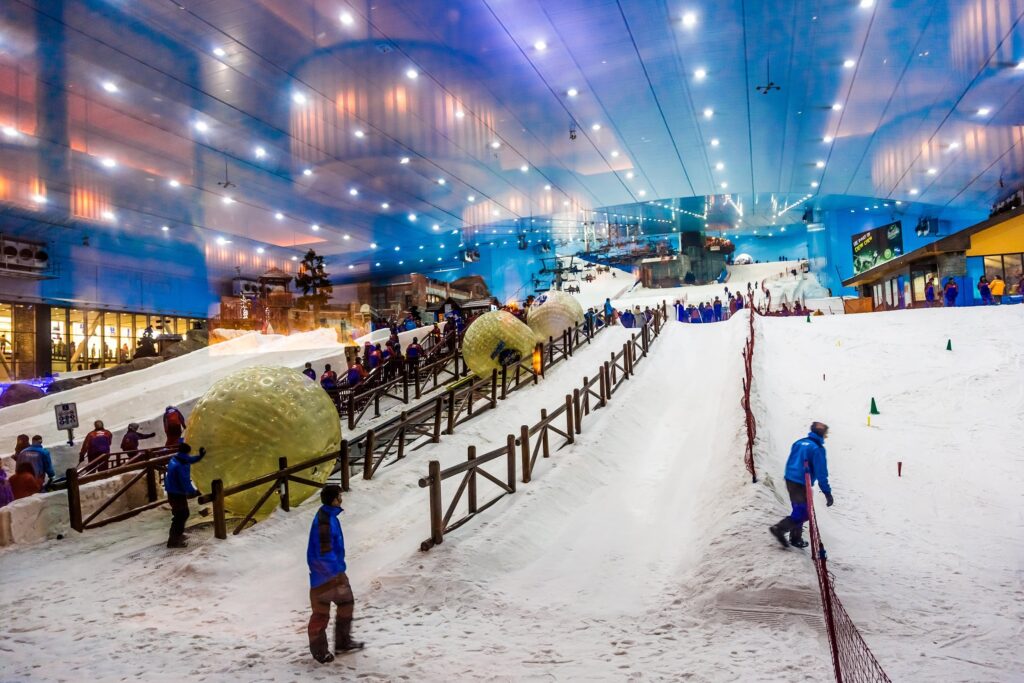How To Design An Eye-catching Ice And Snow Theme Park?
The design of ice and snow theme parks should make full use of the cultural characteristics of ice and snow itself, combined with the cultural connotation of cold regions.
1. Ice Lanterns
Ice lanterns are one of the most common landscapes in ice and snow theme parks. The settings of ice lanterns should also be changed according to different themes. For example, in Harbin Ice and Snow World, the design and arrangement of ice lanterns each year have their own unique connotations. According to the different themes of the ice and snow world every year, different ice lantern art will be designed to suit the theme. At night, different lighting illuminations are combined into different landscape features, forming the unique charm of the ice and snow world.
2. Ice Sculptures
Different from ice lanterns, ice sculptures are the crystallization of the designer’s artistic inspiration and ability. Ice sculptures are different scenery carved by the designer using snow blocks, and the scenery usually contains rich cultural connotations, which is the carrier of the designer’s ideas. The ice sculptures in Harbin Ice and Snow World show the symbol of pure white beauty, with far-reaching meaning and deep cultural connotation. And because of its short existence, as a kind of time sculpture, ice sculpture symbolizes the temperament of northern forbearance and delicate cultural spirit.
3. Plant Landscaping
The selection of plants in the theme park should fully consider the local natural and geographical conditions, and the selection of plants should also set off the theme. The selection of tree species in northern theme parks is generally dominated by native tree species, especially cold-resistant tree species and evergreen tree species for a reasonable configuration. Specific to the ice and snow theme park, it is necessary to make full use of the climatic characteristics of the cold region to create a unique landscape.
The most famous is the smog in Harbin. Due to the low temperature, the snow falls on the branches to form unique ice hangings. The crystal clear ice crystals are attached to the vegetation, and the natural features and gifts of nature are used to decorate the natural landscape of the ice and snow world, allowing tourists to be in the snow and ice and experience the winter plant style, making people nostalgic and forgetting to return.
4. Architectural Landscape
In addition to meeting the requirements of infrastructure, the buildings in the ice and snow theme park must also cooperate with the landscape characteristics of the theme park, so that the buildings show the characteristics of artistic appreciation, which complements the ice and snow landscape and adds to the monotonous white landscape. other colors.
Once the static landscape is built, it will have a certain degree of stability, and the space for climate improvement is limited. If the park is full of static landscapes, it will easily cause visual fatigue for tourists. Therefore, dynamic factors should be integrated into the static landscape and create colorful artistic effects to expand the theme and prolong the life cycle of the theme park.
5. Functional Division of Ice and Snow Theme Parks
The park is divided into ice sculpture area, ice and snow culture publicity area, ice activity area, and ice and snow works exhibition area.
6. Ice and Snow Sculpture Scenic Spot
The Ice and Snow Corridor Scenic Spot is a scenic spot composed of pavilions and corridors made of ice. The pavilion corridors are built in Roman style, and Roman columns are often used. That makes the pavilion corridors imposing, bright and atmospheric, with simple and lively lines and an ancient civilization. This kind of building is majestic and magnificent, coupled with the tortuous trend of Chinese-style pavilions and corridors so that the trend of pavilions and corridors is constantly changing and rich and diverse.
7. Ice and Snow Culture Promotion Area
The ice and snow culture publicity area takes the European-style ice and snow culture exhibition hall as the main scene. After the building, a large area of white birch is planted. The white birch forest is a rare tree species that can be viewed in northern winter. It has a solemn and solemn temperament in winter. In the Ice and Snow Culture Exhibition Hall, visitors can display miniature models of excellent ice and snow works over the years, as well as the development history of the city’s ice and snow culture, as well as regularly exhibit excellent poems and paintings with ice and snow as the theme. In addition, the public rest area provides a place for tourists to stay and rest in winter.
8. Ice Activity Area
The ice activity area is the main ice and snow activity area in the park. Visitors can play ice sports here, such as skating, ice car, and ice pumping. It is a leisure area suitable for tourists who come with their families to play here, especially children.
9. Indoor Ice and Snow Scenic Area
The indoor ice and snow scenic spot is a tourist area for viewing the ice scene indoors. The ice surface is enough on the map. This is the courtyard in the front courtyard and the backyard in the composition characteristics of private gardens. It is composed of many small buildings. The architectural style is still in European style.
However, the road design is also winding, which expands the limited space infinitely. There is long-term preservation of ice and snow landscape in the interior, which can be viewed not only in winter but also in other seasons. This also alleviates the regret that the ice and snow culture in the north can only be reflected in winter.
10. Ice and Snow Works Exhibition Area
The free exhibition area of ice and snow works is a venue for ice and snow workers who love ice and snow culture to display their excellent works.
The construction of ice and snow theme parks in any place should be designed in combination with their unique regional climate, cultural characteristics, and economic environment. At the same time, attention should be paid to the coordination of the landscape. Each landscape should reflect the theme characteristics, and emphasize the integration of different combinations of landscapes and dynamic factors.



